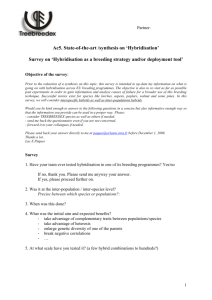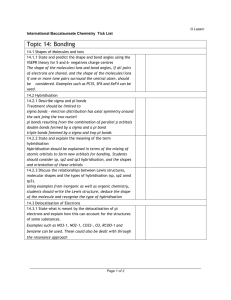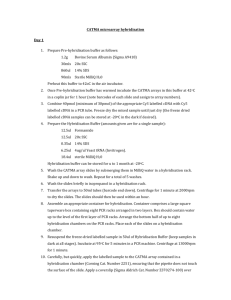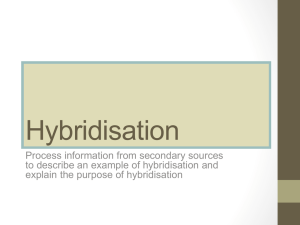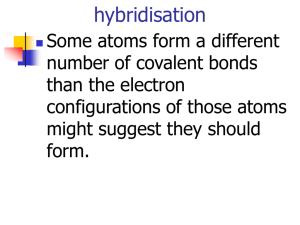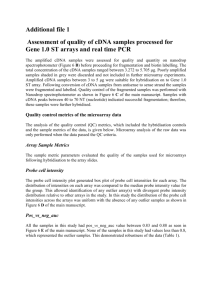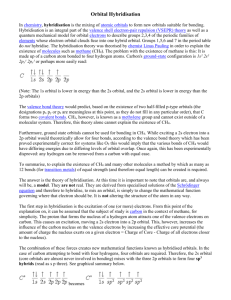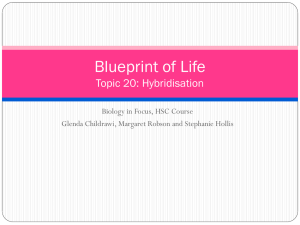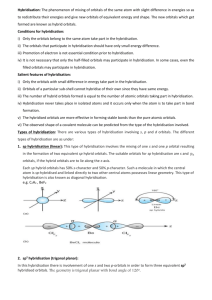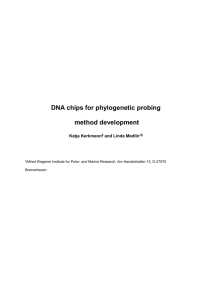HYBRIDISATION - SPBBiology
advertisement
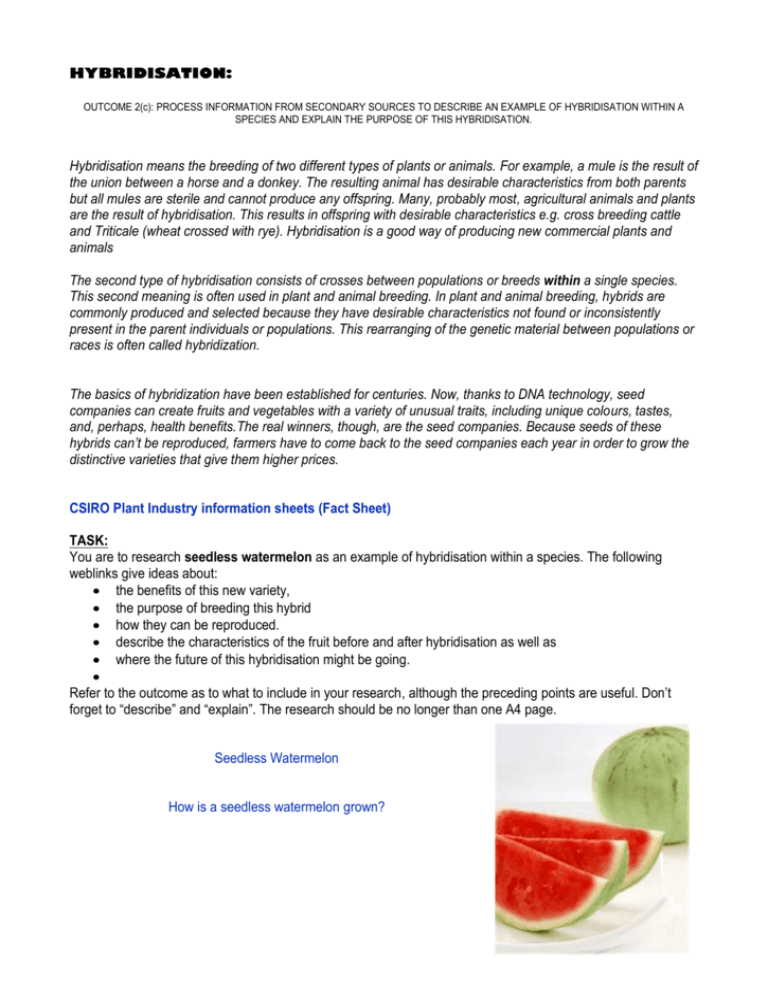
HYBRIDISATION: OUTCOME 2(c): PROCESS INFORMATION FROM SECONDARY SOURCES TO DESCRIBE AN EXAMPLE OF HYBRIDISATION WITHIN A SPECIES AND EXPLAIN THE PURPOSE OF THIS HYBRIDISATION. Hybridisation means the breeding of two different types of plants or animals. For example, a mule is the result of the union between a horse and a donkey. The resulting animal has desirable characteristics from both parents but all mules are sterile and cannot produce any offspring. Many, probably most, agricultural animals and plants are the result of hybridisation. This results in offspring with desirable characteristics e.g. cross breeding cattle and Triticale (wheat crossed with rye). Hybridisation is a good way of producing new commercial plants and animals The second type of hybridisation consists of crosses between populations or breeds within a single species. This second meaning is often used in plant and animal breeding. In plant and animal breeding, hybrids are commonly produced and selected because they have desirable characteristics not found or inconsistently present in the parent individuals or populations. This rearranging of the genetic material between populations or races is often called hybridization. The basics of hybridization have been established for centuries. Now, thanks to DNA technology, seed companies can create fruits and vegetables with a variety of unusual traits, including unique colours, tastes, and, perhaps, health benefits.The real winners, though, are the seed companies. Because seeds of these hybrids can’t be reproduced, farmers have to come back to the seed companies each year in order to grow the distinctive varieties that give them higher prices. CSIRO Plant Industry information sheets (Fact Sheet) TASK: You are to research seedless watermelon as an example of hybridisation within a species. The following weblinks give ideas about: the benefits of this new variety, the purpose of breeding this hybrid how they can be reproduced. describe the characteristics of the fruit before and after hybridisation as well as where the future of this hybridisation might be going. Refer to the outcome as to what to include in your research, although the preceding points are useful. Don’t forget to “describe” and “explain”. The research should be no longer than one A4 page. Seedless Watermelon How is a seedless watermelon grown?
